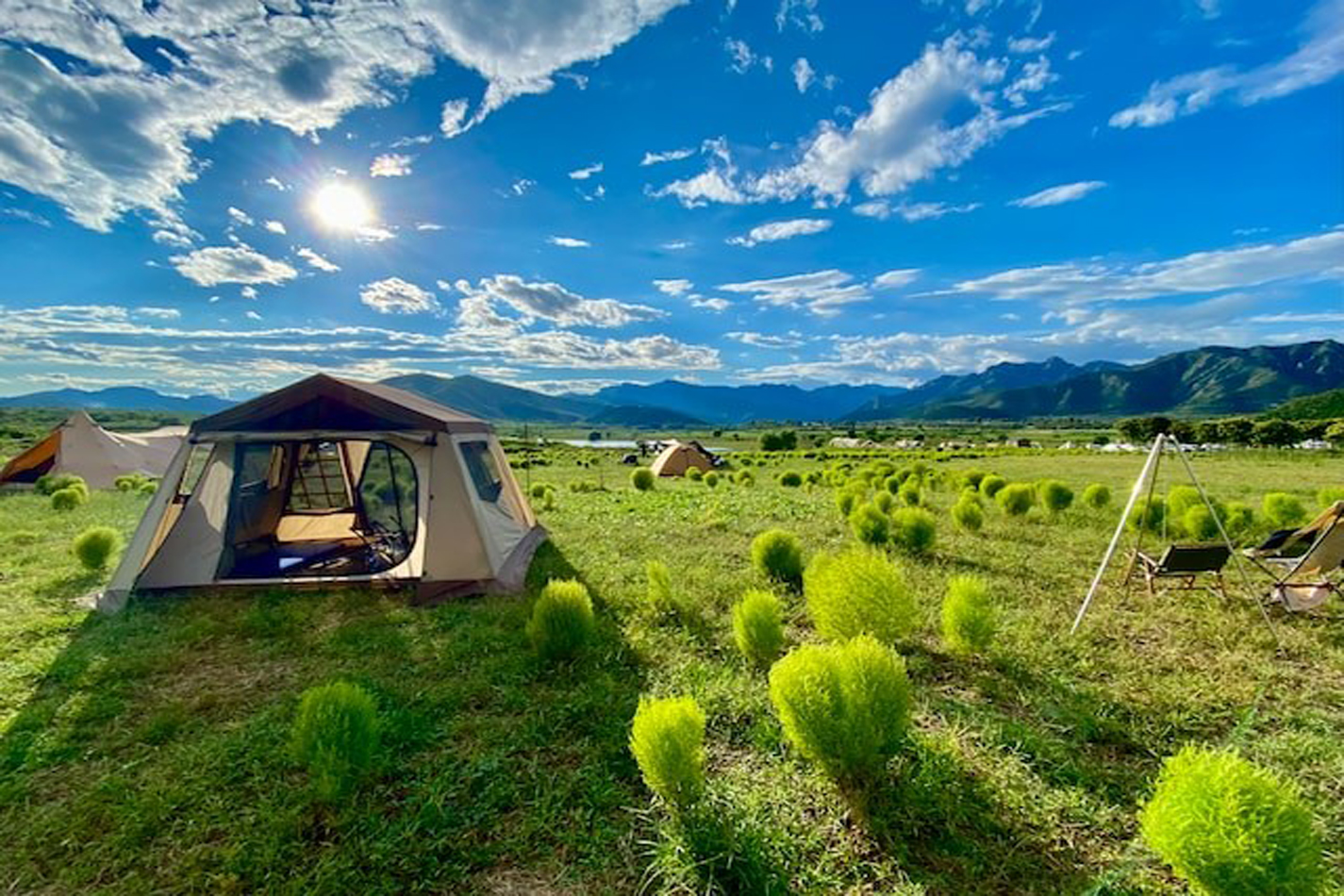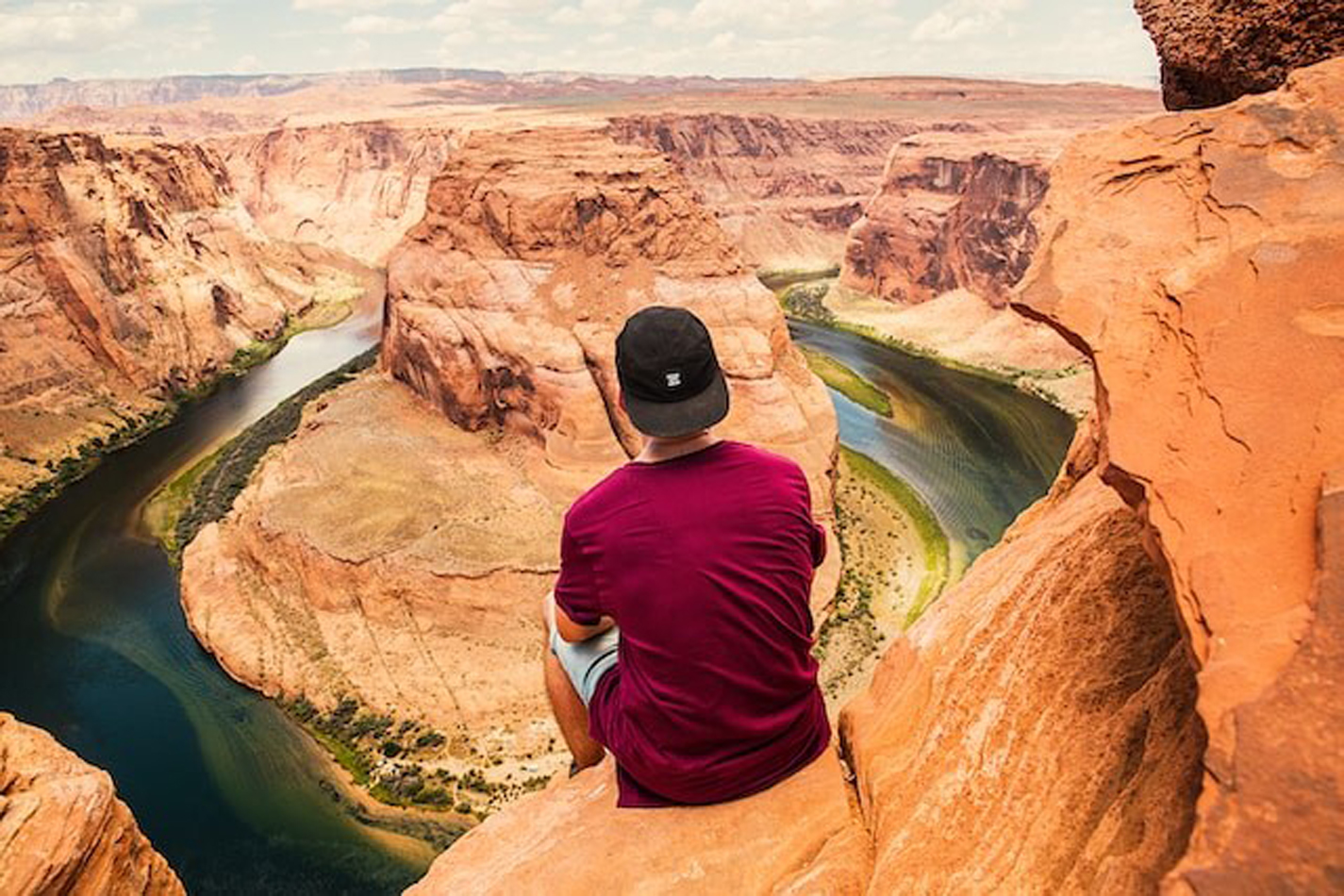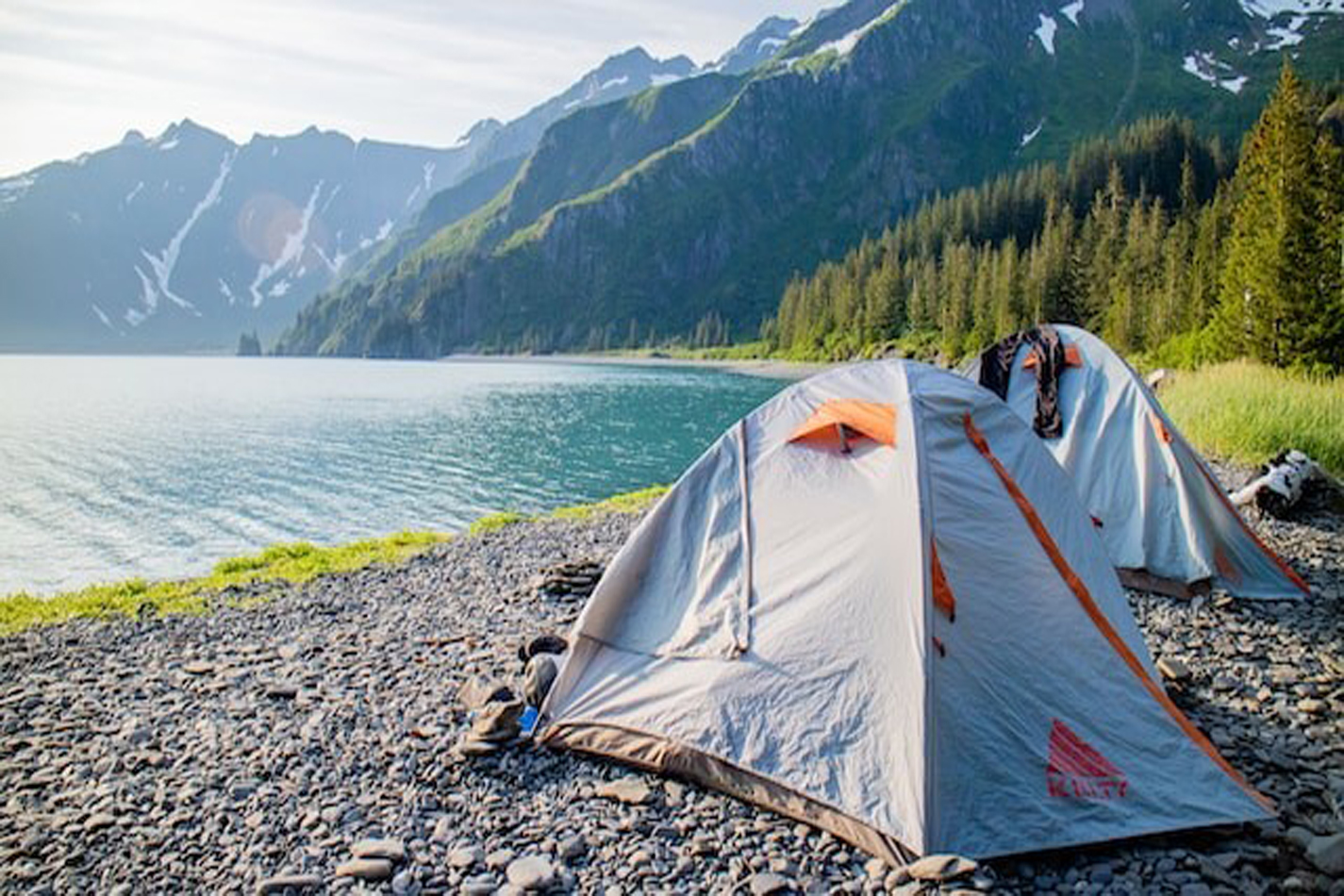THE ULTIMATE BEGINNER'S GUIDE TO CANOE CAMPING
What is Canoeing Camping?
Submerging the two different activities or terms of canoeing and camping in a single adventures termed as canoeing camping, where a single person or a group of individuals explore the nature by using canoes navigating through water bodies, it may be rivers, lakes or streams while carrying their camping supplies and equipment.
Let’s delve into some more details for better understanding the canoeing camping.
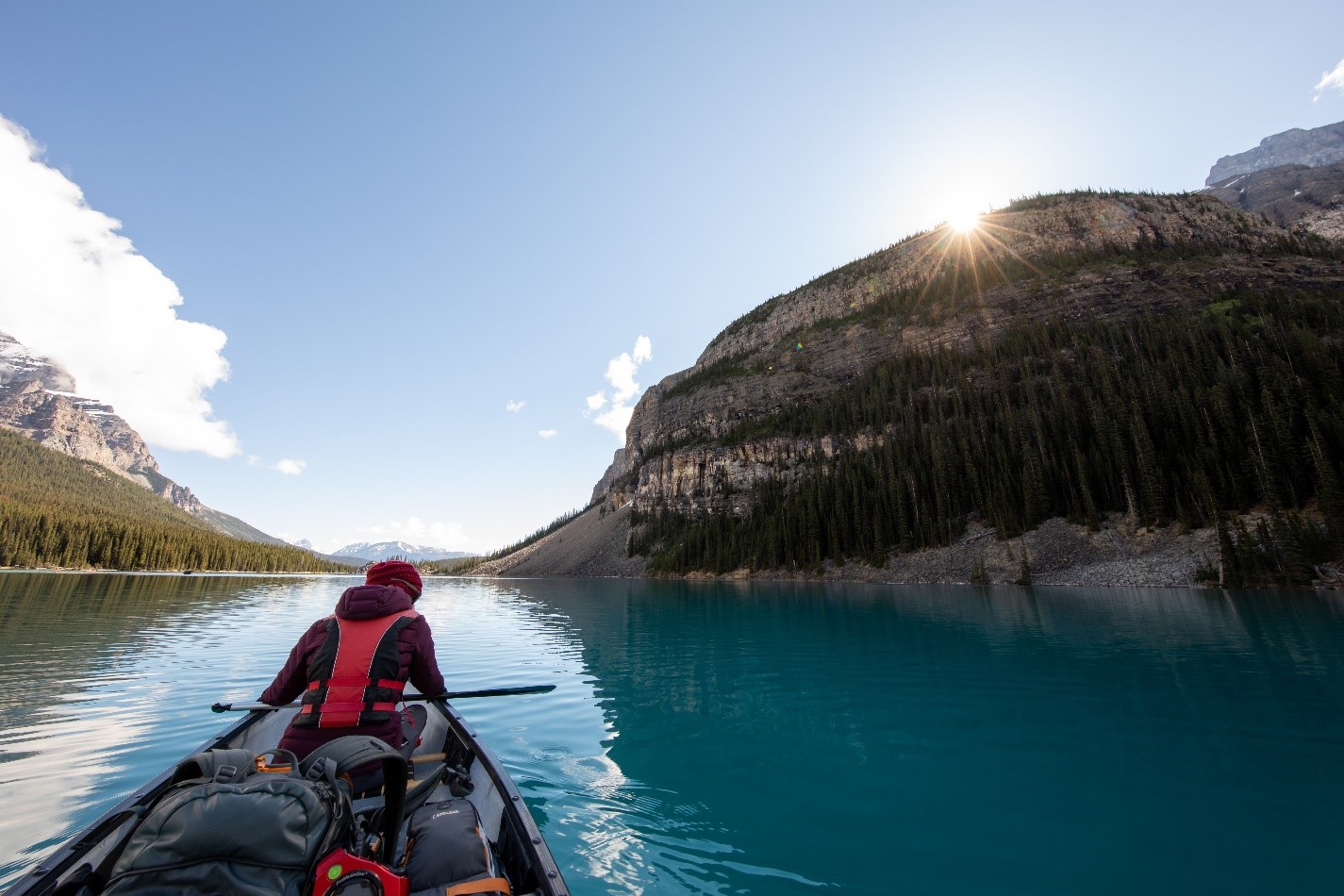
Mode of Traveling or Transportation:
Canoe Campers basically use canoe as the primary mode of transportation. What is Canoe? Canoes are open-top boats having the capacity to accommodate multiple passengers as well the significant amount of camping gears and food items.
Camping Gears:
Since, canoeing camping is a type of adventure which includes camping on-land as well on-water, therefore, the campers need various equipment to tackle the challenges of wind, water, waves and other foreseeable circumstances. On top of it paddling skills is pre-requisite. Other necessary equipment the campers might need are tents, sleeping bags, food, cooking equipment, tarps, torch light. These gears need to be packed in water proof containers or bags to protect it from water.
The way of Water:
Canoe campers navigate waterways that could be rivers, lakes, streams or even include ocean as long as you are travelling along the coast. Now, it’s entirely up to you to choose the waterways. Be it rambling river, a calm and serene lake or a winding creek, you have the freedom to pick the path for your thrilling aquatic adventure. The choice you make also depends on the level of skill and expertise and desired experience.
What is portaging:
Another important aspect in this type of adventure is portaging where there are instances en route a tripper may carry your canoe and gears to avoid obstacles such as rapids or waterfalls or pass the piece of land between the water bodies.
For example, you are navigating through a river, there might be waterfall or rapids. To avoid this hazard, you probably need to carry your gears and canoe overland around this section to safe water and starts your journey again.
Portaging is even more difficult and challenging when you are travelling to a less popular sites. Because, you have map out the route and use your own portage skills to navigate through the bushes. This is often the case in backcountry camping. The sites are far away and you might not be able to see any signs or marking for navigations. But this is where the beauty of camping comes into play. But don’t forget that this is where you are on your own with little or no immediate help around. So, be careful in making plans for such kind of expedition.
IMPORTANT SKILLS FOR CANOE CAMPERS
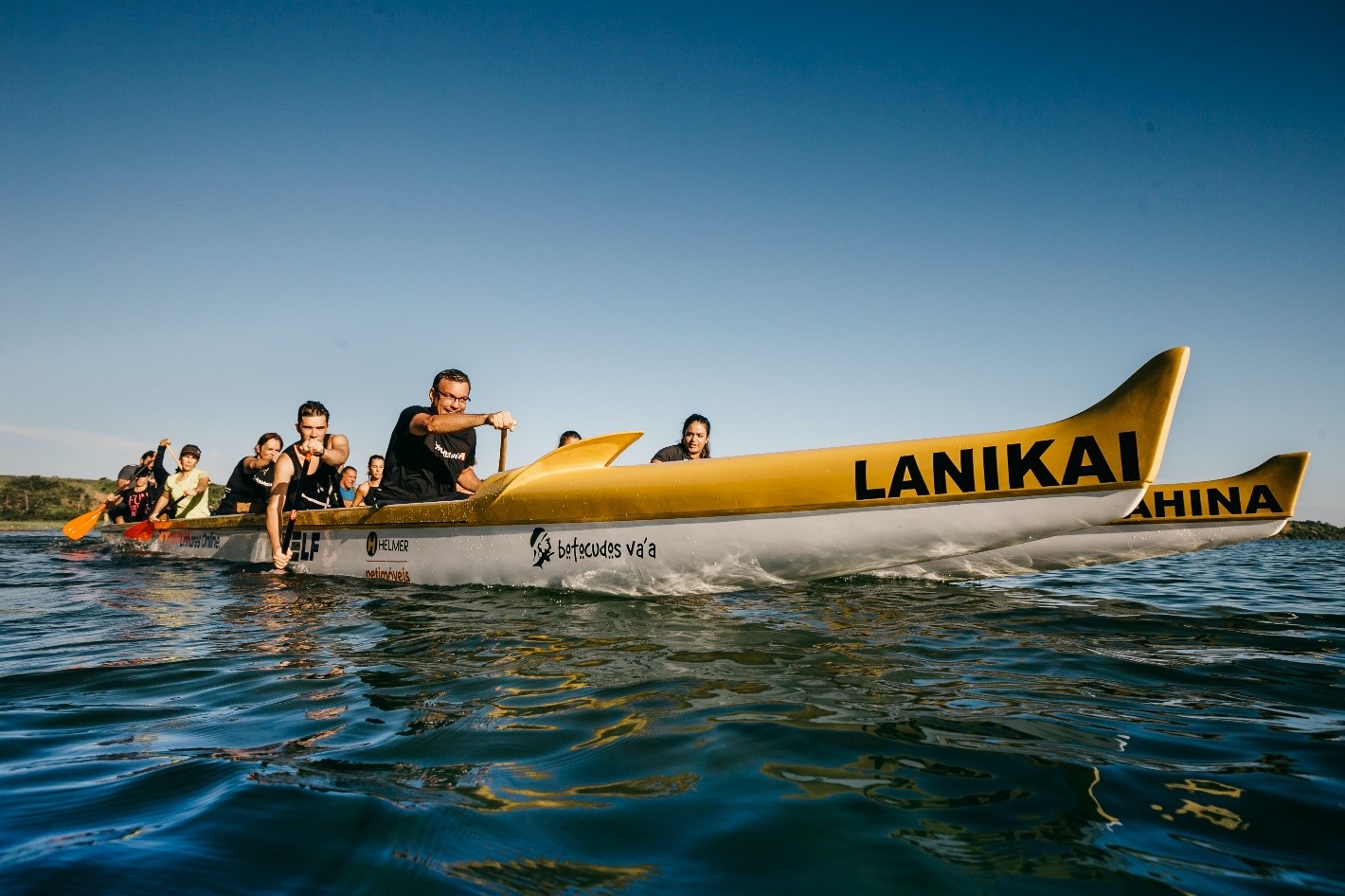
Before setting off on a canoe camping adventure, the canoe campers must equip themselves with some of the basic and necessary skills that are pre-requisite for canoe camping. Although, these skills depend on the route and the difficulty level of expeditions, but for a more enjoyable and safe camping developing canoeing camping skills is of paramount importance
Paddling Skills:
It is one of the most basic skills needed for canoeing. It's a fundamental aspect of canoe camping that allows you to explore remote and beautiful waterways
that are otherwise inaccessible. Apparently, it seems quite simple, but there is more than just paddling. To save energy, maintain rhythm, paddle efficiently need to understand the sitting position, the grip of handle, forward and backward strokes, when to stop, steer the canoe on safe line, close paddling and working with other paddlers etc. One can develop these skills with experience over time but it is important to have an idea of these canoeing skills for a fuller experience of the trip.
Navigation Skills:
Navigation skills are of paramount importance when you are planning especially for
a longer trip, tough routes and challenging conditions. These skills include how to read maps, compass mastery, landmark and nature’s signs, dead reckoning etc.
Map Reading:
Learning to read maps is like deciphering nature's own secrets. Each contour line, every symbol, tells a story waiting to be discovered.
Compass Mastery:
Similarly, a compass is like a trusted friend guiding you through unfamiliar terrain. It points you towards home when the sun disappears behind clouds, and stars get shy behind thick canopies.
Landmarks and Nature's Signs:
Learn to interpret nature's signs - the bend in a river, the direction of the wind, the slope of the land. These are your silent guides.
Dead Reckoning:
Dead reckoning is the art of estimating your position based on previously known points. It's like connecting the dots in a celestial masterpiece.
Wayfinding Wisdom:
A true navigator doesn't just follow a set course blindly. They feel the water, sense the wind, and let the land speak to them. It's an intuitive connection to the natural world, a dance with the elements.
Emergency Navigation:
When clouds gather and storms threaten, your navigation skills become your lifeline. Plotting an emergency course or finding your way back to camp in challenging conditions is a true test of your abilities.
Emergency Response Skills:
Just like others, emergency response skills in the heart of wilderness during a canoe camping expedition are the beacon of hope that guide you through the darkest moments. It includes a range of abilities and knowledge that can make a difference between chaos and calm when the unexpected situations and challenges arises. These skills include swift water rescue techniques to aid a fellow paddler in trouble, wilderness first aid to mend wounds, and the wisdom to navigate through storms and adversity with resilience. It is highly recommended to get some trainings how to respond in case of emergency before canoeing camping trip.
IMPORTANT GEARS AND EQUIPMENT NEEDED FOR CANOE CAMPING
1. Canoes:
Going for Canoeing Camping, the first thing that comes to mind is the Canoe itself. Now, the Canoes come in various sizes and type, chose the one that best suits your requirement. This means, the number of persons in the group. It may be solo camping or more, do a little bit research about the types of canoe, the seating capacity and the types of material it is made up of. We already made it easy for your by making this research. Please follow the link to find out various types of canoes its pros and cons etc. Selecting the right type of canoe is important considering the expedition you are taking on. As, there might be instances where you need to portage, so the light the canoe is the easier it will be for you to carry it over long distance with ease.
2. Paddles:
The next important and integral part of canoe is the paddles without which the canoe is useless. Now, just like canoe, selecting the right paddles is of utmost important. There are different types of paddles for specific situation. Want to know in details about the different types of paddles and its uses for a specific and unique situation click here.
3. Life Jackets:
Personal Flotation Devices are essential for safety and are used in various water activities, including boating, canoeing, kayaking, fishing, swimming, and paddle boarding. provide buoyancy, which helps keep a person afloat in water, even if they are not strong swimmers or are unconscious. Wearing a properly fitted PFD provides peace of mind to water enthusiasts, knowing that they have a safety measure in place in case of an accident. it's essential to choose one that fits you or the intended user properly. A well-fitting PFD is comfortable and won't ride up when in the water. Always follow the manufacturer's sizing guidelines and adjust the straps accordingly. Remember that a PFD can only serve its purpose if it's worn correctly and securely.
4. Dry Bags:
These keep your gear dry in case of capsizing or splashing. Get different sizes for various items.
5. Tent:
Choose a lightweight, compact tent suitable for your group size. Make sure it's easy to set up and tear down.
6. Sleeping Bags:
Select ones appropriate for the season and weather conditions you expect. For more (check our detailed blog) on sleeping bags and its proper uses.
7. Sleeping Pads:
These add insulation and comfort when camping.
8. Cooking Equipment:
- Camp Stove (for details of different types of camp stove and its intended uses please click here.
- Fuel
- Cookware (pot, pan, utensils)
- Soap/Shampoo
- Food (packed in waterproof containers)
9. Water Filtration:
Ensure access to clean drinking water by carrying a water filter, purification tablets, or a portable water purifier. Want to know more about different types of water filter bottle available out there in the market.
10. Navigation Tools:
- Maps
- Compass
- GPS (optional)
11. First Aid Kit:
A well-stocked kit should include bandages, antiseptic wipes, pain relievers, and any personal medications.
12. Repair Kit:
This should include duct tape, a multi-tool, spare parts for your canoe, and repair materials for gear.
13. Clothing:
- Quick-dry clothing
- Rain gear
- Insulating layers
- Hat
- Gloves
- Sturdy, water-resistant footwear
14. Headlamp/Flashlight:
This is also an important gear while going camping. Make sure to carry extra batteries too.
15. Personal Items:
- Identification and permits
- Cash/credit cards
- Keys
- Phone (in a waterproof case)
- Camera: Although, this is an optional item but I think an important gear to capture the memories for flashback.
16. Camp Towel:
Microfiber towels are compact and dry quickly.
17. Bug Protection:
Insect repellent, head nets, and clothing with built-in insect repellent can be essential in some areas.
18. Rope and Cordage:
Useful for securing gear and various camp tasks.
19. Trash Bags:
Practice Leave No Trace principles and pack out all trash.
20. Fire-starting Kit:
Waterproof matches, a lighter, and firestarter material.
21. Repair Kit for the Canoe:
Duct tape, epoxy, patch kits, and tools specific to your canoe's materials will help you out in repairing the canoe in case of any damage to it during adventure.
22. Camping Permits:
Depending the area/location you are exploring, it’s better to do a preliminary research and obtain any necessary permits for the area you plan to visit.
23. Emergency Communication:
A whistle, signal mirror, and a satellite communication device can be crucial in emergencies.
24. Navigation Aids:
Topographic maps and a GPS device if you're unfamiliar with the area.
25. Bear Canister or Bear Bag:
In bear country, you'll need to properly store your food and scented items.
26. Fishing Gear:
If you plan to fish, bring your fishing equipment and any required permits.
27. Camp Chairs or Seat Pads:
For added comfort around the campfire.
28. Water bailer:
In case you are peddling in heavy water chances are the water get into the canoe, these vessels are useful in throwing away the water. These are small items but a great relief in case of capsizing and other emergencies. So make sure to have it in your gears list.
29. Yok Pad:
In case where portaging over a long distance, yok pad is very helpful to distribute the weight of canoe.
30. Sunscreen:
You can never have enough sunscreen when you’re canoeing. Even when it’s cloudy, the sun’s rays can reflect off the water and cause sunburn.
31. Dry suit:
Don’t forget to grab a warm and dry suit in case you choose to camp in cold, wet or rainy weather. This will not only help you keep warm and dry but protect you from getting sick and cold.
32. Spray Deck:
If you are venturing in fast water or rainy season, the most important gear you should include in the gear list is spray deck for your canoe. This will keep the water out of your canoe coming in result of raining or splashes in high tide or rapid water. Readymade spray deck is available in the market. Please check it here. However, depending on the size of your canoe, you can make it custom made. The choice is yours.
Remember that the specific gear you need may vary depending on the location, season, and duration of your canoe camping trip. Always check local regulations and weather conditions before heading out, and be sure to pack and plan accordingly.
WHAT TO WEAR WHILE CANOEING: A PRECTICAL GUIDE
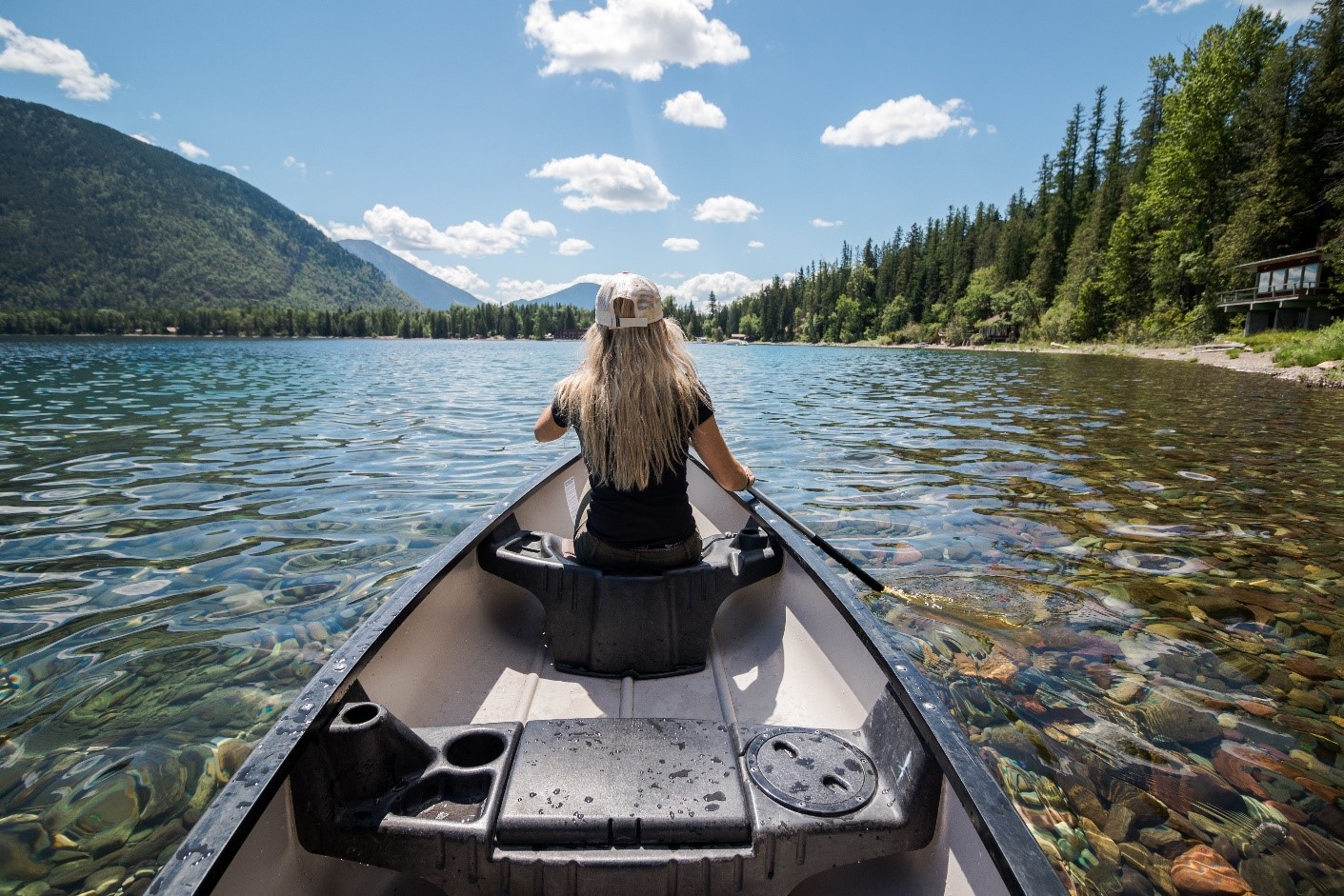
When gearing up for a canoeing adventure, it's essential to dress appropriately to ensure comfort, safety, and enjoyment on the water. Here's a practical guide to what to wear while canoeing:
Quick-Dry Pants and Shorts
Pants:
Quick-dry hiking pants are an excellent choice. They provide protection from the elements, dry quickly if they get wet, and often have useful pockets for small essentials.
Shorts:
For warm weather or casual paddling, gym-style shorts are a comfortable option. Look for shorts made from quick-drying materials.
Quick-Dry T-Shirt
Choose a polyester or quick-dry T-shirt. These shirts wick moisture away from your skin, keeping you dry and comfortable even on hot days. They are durable and don't require special care.
Bathing Suit or Underwear & Sports Bra:
Bathing Suit:
If the weather is warm and you plan to take refreshing dips, wearing a bathing suit as your base layer is convenient.
Underwear & Sports Bra:
Some paddlers prefer moisture-wicking underwear and a sports bra for extra support. Ensure both are comfortable and suitable for physical activity.
Wet Shoes or Closed-Toed Trail Running Shoes:
Wet Shoes:
Opt for wet shoes whenever there's a possibility of your feet getting wet, whether from splashes or rain. These shoes are designed to drain water and provide good traction on slippery surfaces.
Closed-Toed Trail Running Shoes:
For added versatility, consider closed-toed trail running shoes. They are suitable for paddling, hiking, and portaging, providing excellent grip and protection.
Optional Extras:
Sun Protection:
Don't forget to protect yourself from the sun. Wear a wide-brimmed hat, sunglasses with UV protection, and apply sunscreen to exposed skin.
Anti-Odor T-Shirt:
Consider wearing an anti-odor quick-dry T-shirt to stay fresh during extended trips.
Rain Gear:
Pack waterproof rain gear like a jacket and pants for unexpected rain showers or heavy splashes.
HOW TO PLAN A CANOE CAMPING TRIP?
In management, there is a famous quote “if you fail to plan, you plan to fail”. Just like every other aspect of the camping, planning the trip is highly important.
Canoe camping is an exhilarating outdoor adventure that allows you to explore nature from a unique perspective. To make the most of your trip, meticulous planning is essential. In this section, we'll walk you through the steps to ensure a memorable and safe canoe camping experience.
INTRODUCTION
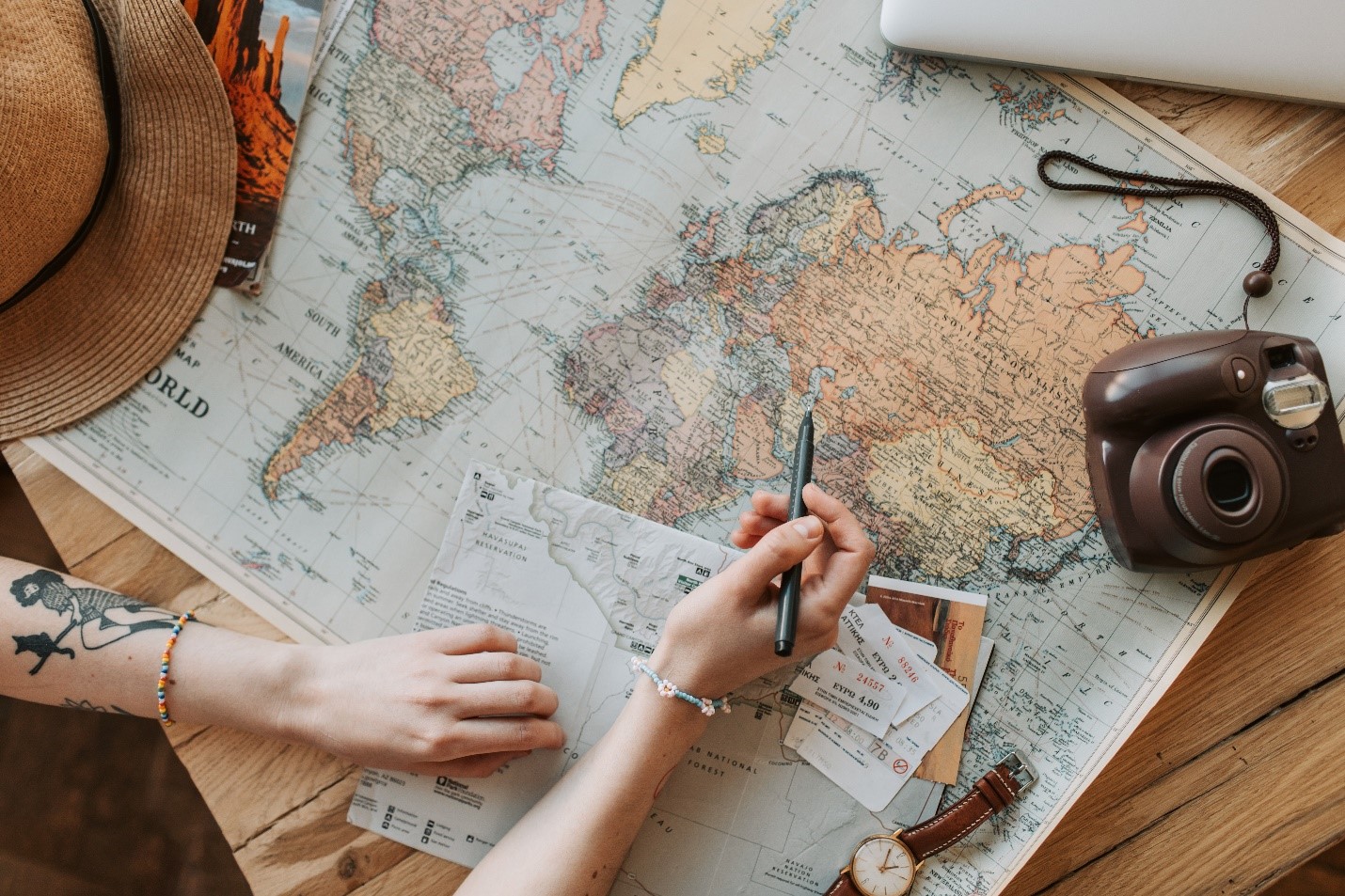
Explanation of Canoe Camping:
Canoe camping is an exciting outdoor activity that combines the tranquility of canoeing with the rustic charm of camping. In this adventure, individuals or groups set out on multi-day journeys, navigating rivers, lakes, or other waterways while carrying all the necessary gear and supplies for camping along the way. It offers a unique opportunity to immerse oneself in nature, explore remote wilderness areas, and experience the self-reliance and simplicity of outdoor living.
Importance of Planning:
The importance of planning cannot be overstated when it comes to canoe camping. Unlike day trips, multi-day canoe camping excursions require thorough preparation to ensure a safe, enjoyable, and successful experience. Inadequate planning can lead to logistical difficulties, safety hazards, and a less-than-optimal adventure.
Overview of Key Planning Steps:
Whether you're a newcomer eager to embark on your first canoe camping adventure or an experienced paddler looking to enhance your planning skills, these steps are the foundation for a successful expedition. Proper planning ensures that you have the right equipment, a clear understanding of your route, awareness of potential risks, safety considerations, food and water logistics, and Physical preparation, Environmental Awareness and contingency plans in place. It sets the stage for a memorable and well-executed canoe camping adventure.
Destination Selection
Destination selection is a crucial first step in planning a canoe camping trip. By thoroughly evaluating the below points, you can make an informed decision that sets the stage for a safe and enjoyable adventure in the great outdoors.
Researching Potential Canoe Camping Destinations:
To begin planning your canoe camping trip, the first step is researching potential destinations. Start by identifying areas that offer suitable waterways for canoeing and camping. Utilize resources such as guidebooks, online forums, and websites to gather information about different destinations. Pay attention to factors like the type of water bodies available (rivers, lakes, coastal areas), the natural beauty of the region, and the availability of campsites or designated camping areas.
Considering Skill Level and Experience:
Your skill level and experience as a paddler are critical considerations when selecting a canoe camping destination. Novices should opt for destinations with calm and easily navigable waters, while more experienced paddlers may seek out challenging routes with rapids or more unpredictable conditions. Be honest about your abilities to ensure a safe and enjoyable trip for yourself and your group.
Evaluating Waterway Options:
Evaluate the waterway options within your chosen destination. Consider the length of the route, the difficulty of navigation, and the presence of any hazards such as rocks, currents, or wildlife. Some destinations may offer multiple routes with varying degrees of difficulty, allowing you to tailor your trip to your group's skill level and preferences.
Checking Local Regulations and Permits:
Before finalizing your destination, research and understand the local regulations and permit requirements. Different areas may have specific rules regarding camping, fire regulations, waste disposal, and fishing. Ensure that you obtain any necessary permits and adhere to all regulations to avoid legal issues and minimize your impact on the environment. Additionally, check for any seasonal restrictions or closures that could affect your trip.
Equipment Preparation
Proper equipment preparation is vital for a successful canoe camping adventure.
Creating a Comprehensive Gear Checklist:
Start your equipment preparation by creating a comprehensive gear checklist. List all the items you'll need for your canoe camping trip, including camping gear, cooking equipment, clothing, safety gear, navigation tools, and personal items. A well-organized checklist will help you ensure you have everything you need and minimize the risk of forgetting crucial items.
Renting or Purchasing Canoe and Camping Gear:
Depending on your situation, you may need to rent or purchase canoe and camping gear. Evaluate the availability and cost-effectiveness of renting equipment locally versus buying it if you plan to go canoe camping regularly. Make reservations well in advance if renting, and if purchasing, ensure that your gear suits the specific needs of your trip, such as the type of canoe and the season's camping gear requirements.
Ensuring Gear is in Good Condition:
Before embarking on your canoe camping trip, thoroughly inspect all your gear to ensure it is in good condition. Check for any signs of wear, damage, or malfunction. Pay special attention to critical safety gear such as life jackets and paddles. Repair or replace any damaged items to avoid issues during your journey.
Packing Strategically for Canoe Storage:
Canoes have limited storage space, so it's essential to pack strategically. Organize your gear in waterproof bags or containers to protect them from water exposure. Distribute weight evenly in the canoe to maintain stability. Keep frequently needed items easily accessible, and pack items you won't use until camp deeper in the canoe. This strategic packing ensures a balanced load and easy access to essentials during your trip.
Route Planning
Mapping Out the Itinerary:
Begin your route planning by mapping out the itinerary for your canoe camping trip. Identify the starting point and endpoint, along with any significant landmarks or points of interest you want to visit along the way. Use topographic maps, GPS devices, or online mapping tools to create a detailed route that includes waterways, portages, and potential obstacles.
Identifying Campsites and Rest Stops:
Research and identify suitable campsites and rest stops along your planned route. Look for established campsites or areas where camping is permitted. Ensure that these locations are accessible by canoe and offer amenities like water sources and proper waste disposal facilities. Having designated rest stops will help you break up your journey and make navigation more manageable.
Estimating Daily Distances:
Estimate the daily distances you plan to cover while canoeing. Consider factors such as your group's paddling speed, the water conditions, and the difficulty of the route. Keep in mind that overestimating daily distances can lead to fatigue, while underestimating them can result in delays. Striking the right balance is essential for a smooth and enjoyable trip.
Factoring in Weather Conditions:
Stay informed about the weather conditions for the duration of your canoe camping trip. Check weather forecasts for your chosen destination and the surrounding area. Be prepared to adjust your itinerary or take necessary precautions in response to changing weather patterns. Adverse weather, such as storms or strong winds, can significantly impact your journey, so flexibility is key.
Safety Measures
Be prepared for unexpected situations and ensure that everyone in your group is familiar with safety protocols
Essential Safety Equipment:
Prioritize safety by ensuring you have essential safety equipment on your canoe camping trip. This equipment includes personal flotation devices (PFDs) or life jackets for everyone onboard, signaling devices (such as whistles or air horns), a throw rope, and a bilge pump for water removal. Additionally, consider carrying a multi-tool or knife, a headlamp or flashlight, and a fire extinguisher as part of your safety arsenal.
First Aid Kit and Medical Supplies:
A well-stocked first aid kit is crucial for handling injuries or medical issues while canoe camping. Include items like bandages, antiseptic wipes, adhesive tape, pain relievers, insect repellent, sunscreen, and any necessary prescription medications for your group members. Ensure that someone in your group is trained in basic first aid and knows how to use the items in the kit.
Communication Devices:
Stay connected and be prepared for emergencies with communication devices. Carry a fully charged mobile phone in a waterproof case or pouch to call for help if needed. Additionally, consider bringing a satellite phone or emergency locator beacon, especially if you'll be in remote areas with limited cell phone coverage. These devices can be invaluable in emergencies.
Emergency Contacts and Procedures:
Before embarking on your trip, establish a clear set of emergency contacts and procedures. Share your trip itinerary with a trusted friend or family member who knows when and where you plan to be at different points along your route. Discuss what steps should be taken in case you fail to check in as scheduled or encounter an emergency. Make sure everyone in your group knows how to signal for help, whether it's using a whistle, radio, or other signaling device.
Food and Water Planning
Food and water planning are essential for a successful and environmentally responsible canoe camping trip.
Meal Planning and Packing:
Meal planning is a key aspect of a successful canoe camping trip. Determine the number of days you'll be camping and plan meals accordingly. Opt for lightweight, non-perishable foods that are easy to prepare. Consider items like dehydrated meals, canned goods, and trail mix. Create a menu that balances nutrition and energy needs while minimizing waste. Pack food in waterproof, airtight containers or bags to keep it dry and protected during your journey.
Water Purification Methods:
Ensure a safe and reliable source of drinking water by employing water purification methods. While natural water sources may seem clean, they can contain harmful microorganisms. Carry water purification tools like water filters, purification tablets, or a portable water purifier to make water safe for drinking. Familiarize yourself with the proper use of these methods to avoid waterborne illnesses.
Storage of Food and Trash:
Properly store your food to prevent wildlife encounters and protect the environment. Use bear-resistant containers or bear bags to keep food away from wildlife, and hang them high in a tree if necessary. Practice "leave no trace" principles by packing out all trash and food waste. Bring sealable, odor-proof bags or containers for waste disposal, and store them securely to prevent spills or odors that could attract animals.
Leave No Trace Principles:
Adhere to Leave No Trace principles to minimize your impact on the environment. These principles include packing out all trash, disposing of waste properly, staying on designated trails or campsites, minimizing campfire impact, respecting wildlife, and leaving natural and cultural features undisturbed. By following these guidelines, you help preserve the natural beauty of your canoe camping destination for future generations to enjoy.
Physical Preparation
Fitness and Endurance Training:
Prepare your body for the physical demands of canoe camping by engaging in fitness and endurance training. Incorporate cardiovascular exercises like running, cycling, or swimming to improve your overall stamina. Strength training exercises, such as weightlifting or bodyweight workouts, can help build the muscles needed for paddling and portaging. Aim for a well-rounded fitness regimen to enhance your endurance and overall physical fitness.
Paddling Techniques:
Familiarize yourself with proper paddling techniques to make your journey more efficient and enjoyable. Practice different strokes, including the forward stroke, J-stroke, and sweep stroke, to control your canoe effectively. Learning these techniques not only helps you paddle with less effort but also increases your ability to navigate and maneuver on the water.
Portaging Practice:
Portaging, the act of carrying your canoe and gear overland between water bodies, is a common part of canoe camping. To prepare for this physically demanding task, practice portaging with your canoe and gear before your trip. Start with shorter distances and gradually increase the weight you carry. Use proper techniques to minimize strain on your back and shoulders.
Building Strength and Stamina:
Building overall strength and stamina is crucial for the physical challenges of canoe camping. Incorporate exercises that target the muscle groups used in paddling and portaging, such as the core, shoulders, back, and legs. Focus on exercises like squats, lunges, planks, and rows to develop the necessary strength. Additionally, engage in aerobic activities like jogging or hiking to boost your stamina.
Navigation Skills
Navigation skills are essential for a safe and successful canoe camping trip. Whether you rely on traditional map and compass navigation or use modern GPS devices and apps, understanding how to read water and currents and recognizing landmarks and waypoints will ensure you can navigate the waterways with confidence and precision.
Understanding Map and Compass Navigation:
To navigate effectively during your canoe camping trip, it's essential to understand map and compass navigation. Learn how to read topographic maps, which provide valuable information about terrain, elevation, and natural features. Complement this skill with compass navigation to determine your direction and orient yourself on the map. Knowing how to use a map and compass is a fundamental skill for wilderness navigation.
GPS and Navigation Apps:
Modern technology can aid navigation in the outdoors. Consider using GPS devices or navigation apps on your smartphone or GPS-equipped device. These tools provide real-time location tracking, waypoints, and route planning capabilities. Familiarize yourself with the operation of your chosen GPS device or app before your trip, and always carry backup navigation tools like a map and compass in case of technical issues.
Reading Water and Currents:
When canoe camping, understanding how to read water and currents is vital for safe and efficient paddling. Learn to recognize different water conditions, such as calm waters, eddies, and fast-moving currents. Understanding how currents flow and how they can affect your canoe's direction is essential for navigating rivers and other waterways effectively.
Landmarks and Waypoints:
Familiarize yourself with landmarks and waypoints along your planned route. These can be natural features like distinctive trees, rock formations, or bends in the river. Landmarks serve as visual cues to help you track your progress and ensure you stay on course. Marking waypoints on your map or GPS can also help you navigate to specific destinations or campsites
Environmental Awareness
Environmental awareness is an integral part of responsible canoe camping.
Respecting Wildlife and Habitats:
Show respect for the natural world by respecting wildlife and their habitats. Keep your distance from animals, observe them from afar, and do not disrupt their routines. Avoid loud noises and excessive human activity that can disturb wildlife and their habitats. Paddle quietly and camp in designated areas to minimize your impact on sensitive ecosystems.
Responsible Campfire Practices:
While campfires can be enjoyable, it's important to practice responsible campfire techniques. Always check local regulations and fire bans before starting a fire. Use established fire rings or fire pans when permitted, and keep fires small. Burn only small sticks and twigs found on the ground, and never use live vegetation for fuel. Ensure fires are completely extinguished before leaving your campsite.
Waste Disposal and Clean-up:
Proper waste disposal and clean-up are crucial to preserving the environment during your canoe camping trip. Pack out all trash, food scraps, and litter in sealable, odor-proof bags or containers. Dispose of waste in designated facilities or follow "pack it in, pack it out" practices. When using natural bathroom facilities, follow Leave No Trace guidelines for human waste disposal, using established facilities or digging a "cathole" if necessary.
Budgeting and Expenses
Estimating Trip Costs:
Begin your budgeting process by estimating the total trip costs. Consider expenses such as permits, camping fees, transportation (including fuel and vehicle maintenance), food, gear rental or purchase, and any other costs specific to your canoe camping trip. Overestimating expenses can help you budget more effectively and avoid financial surprises during your adventure.
Setting a Budget:
Once you have a clear estimate of your trip costs, set a budget for your canoe camping adventure. Define spending limits for each expense category, including a contingency fund for unexpected costs. Your budget should reflect your financial capabilities and ensure that you can comfortably cover all trip-related expenses.
Identifying Cost-Saving Opportunities:
Look for opportunities to save on expenses without compromising the quality of your trip. Consider options like group discounts for permits or gear rentals, carpooling with fellow campers to reduce transportation costs, and preparing meals from inexpensive but nutritious ingredients. Additionally, explore cost-saving alternatives for gear, such as borrowing or renting equipment instead of purchasing it.
Keeping Track of Expenses:
Throughout your canoe camping trip, keep meticulous records of your expenses. Use a dedicated notebook or budgeting app to log all spending, including receipts and cash transactions. Regularly review your expenses to ensure you are staying within your budget and to identify any areas where you can cut costs or make adjustments.
Weather and Seasonal Factors
Understanding Seasonal Variations:
Begin by gaining an understanding of the seasonal variations in the region where you plan to go canoe camping. Different seasons can bring significant changes in weather, water conditions, and natural surroundings. Research the typical climate, temperature, and water levels for the time of year you intend to visit. Knowing the seasonal nuances will help you make informed decisions about your trip.
Checking Weather Forecasts:
Stay updated on weather forecasts leading up to and during your canoe camping trip. Access reliable sources of weather information, such as weather apps, websites, or satellite communication devices. Pay attention to forecasts for temperature, precipitation, wind speed, and potential storms. Be prepared to adjust your plans or delay your trip if adverse weather conditions are expected.
Preparing for Rain or Inclement Weather:
Regardless of the season, it's crucial to be prepared for rain or inclement weather during your canoe camping trip. Pack waterproof clothing, including rain jackets, pants, and waterproof footwear. Use dry bags or waterproof containers to protect essential gear and clothing. Ensure you have a sturdy, waterproof tent or tarp for shelter if needed. Adequate preparation can make wet conditions more manageable.
Adjusting Plans for Seasonal Challenges:
Recognize that different seasons may present unique challenges. For example, spring may bring higher water levels and faster currents, while summer can mean more insects and hotter temperatures. Adjust your plans and gear accordingly. Plan for additional safety precautions, such as water level monitoring, insect repellent, or heat management strategies, based on the specific seasonal challenges you anticipate.
Group Dynamics
When embarking on a canoeing camping trip, understanding and managing group dynamics is crucial for a successful and enjoyable experience.
Selecting Camping Companions
Carefully consider the individuals you choose as camping companions for your canoe trip. Select people who share a similar level of interest in canoe camping and have compatible outdoor skills and expectations. Ensure that everyone is physically prepared for the trip and can contribute positively to the group dynamic. Good communication and teamwork are key factors in selecting the right camping companions.
Delegating Responsibilities:
To ensure a smooth and well-organized trip, delegate responsibilities among the group members. Assign tasks such as meal preparation, campsite setup, navigation, and gear maintenance to different individuals based on their skills and preferences. Clearly communicate each person's responsibilities to avoid duplication of efforts and to ensure that all essential tasks are covered.
Conflict Resolution Strategies:
In any group setting, conflicts can arise. It's important to have effective conflict resolution strategies in place. Encourage open communication within the group and create a safe space for expressing concerns or disagreements. Address conflicts promptly and respectfully, focusing on finding solutions that benefit the entire group. Keep in mind that compromising and maintaining a positive attitude can go a long way in resolving conflicts.
Maintaining Group Morale:
Group morale plays a significant role in the overall enjoyment of your canoe camping trip. Foster a positive atmosphere within the group by promoting teamwork, communication, and a sense of camaraderie. Celebrate achievements, share responsibilities, and encourage group members to support one another. Engage in enjoyable activities together, such as storytelling around the campfire or exploring the natural surroundings, to boost group morale and create lasting memories.
Legal Considerations
Permits and Regulations:
Before embarking on your canoe camping trip, research and adhere to all necessary permits and regulations. Different areas may have specific rules regarding camping, campfires, waste disposal, and access to waterways. Obtain any required permits, follow established regulations, and respect any seasonal restrictions to ensure compliance with local and federal laws.
Liability and Insurance:
Consider liability and insurance aspects of your canoe camping trip. Check whether your chosen destination or outfitter requires liability waivers or insurance coverage. Verify whether your existing insurance policies, such as health or homeowner's insurance, provide any coverage for outdoor activities. If needed, consider purchasing supplemental insurance for outdoor adventures to protect yourself and your group in case of accidents or emergencies.
Emergency Response Procedures:
Be prepared for emergencies by establishing clear emergency response procedures. Ensure that everyone in your group knows how to respond to common outdoor emergencies, such as injuries, weather-related issues, or equipment failures. Designate a responsible person to lead in case of emergencies, have a communication plan in place, and carry necessary emergency equipment, like first aid kits and communication devices.
Knowing Local Laws:
Familiarize yourself with local laws and regulations specific to your canoe camping destination. These laws may pertain to fishing regulations, hunting restrictions, fire bans, wildlife protection, or alcohol consumption. Ignorance of local laws is not an excuse for non-compliance, so it's essential to stay informed and respect the legal framework of the area you are visiting.
Pre-Departure Checklist
Final Gear Inspection:
Before setting off on your canoe camping trip, conduct a thorough final gear inspection. Verify that all essential gear, equipment, and supplies are packed and in good condition. Check for any missing or damaged items and make necessary replacements or repairs. Ensure that your gear is properly organized and securely stored in waterproof containers or bags.
Double-Checking Reservations and Permits:
Confirm that all reservations, permits, and permissions are in order. Ensure you have the necessary permits for camping and access to waterways, and that you've complied with any regulations specific to your destination. Double-check reservations for campgrounds or campsites to avoid any unexpected issues upon arrival.
Informing Loved Ones of Itinerary:
Prior to departure, share your trip itinerary with a trusted friend or family member. Provide them with detailed information about your planned route, campsite locations, expected check-in times, and emergency contact numbers. This precaution ensures that someone knows your whereabouts and can alert authorities if you fail to check in as scheduled.
Last-Minute Packing Tips:
As you finalize your preparations, consider a few last-minute packing tips:
- Ensure you have enough food and water for the entire trip, along with a few extra servings.
- Charge all electronic devices and backup batteries.
- Pack essential documents, including identification, permits, and maps, in a waterproof bag.
- Securely fasten all gear to your canoe to prevent shifting during transport.
- Confirm that personal safety equipment, such as life jackets and first aid kits, is readily accessible.
How Canoeing Camping different from Kayaking and Backpacking?
Apparently, all is wilderness adventures, however, there is a difference between canoeing camping and kayaking and backpacking
The difference between Canoeing and Kayaking
Although, both involve paddling on water, however, the key difference lies in the vessel or watercraft itself. Canoes are open and have more space for adventurers and to accommodate gears and equipment, while Kayaks are closed and designed for a single person. In other words, Canoeing Camping is more of communal experience to explore the nature.
The difference between Canoeing Camping and Backpacking
Backpacking means hiking with everything on your back, which can be tough. But canoe camping, oh, it's special! You glide on water, carrying your stuff with ease. It's gentler on your body and takes you to those hidden spots even your feet can't reach.
Final Thoughts
As we conclude this basic guide to canoe camping, I hope you're feeling inspired and well-prepared for your next adventure on the water. Canoe camping offers a unique opportunity to connect with nature, test your outdoor skills, and create lasting memories.
Remember that safety, respect for the environment, and a sense of adventure should always be your companions on this journey. Whether you're a seasoned paddler or new to the world of canoeing, each trip brings its own set of challenges and joys.
So, go ahead, plan your route, pack your gear, and embark on your canoe camping expedition. Whether it's the tranquil beauty of a calm lake, the excitement of navigating through rapids, or the serenity of a remote river, the experience is sure to be unforgettable.
Safe travels, happy paddling, and may your canoe camping experiences be filled with wonder and awe.
